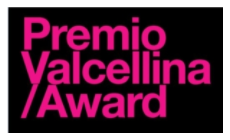2 Sister Stitch artisans supported by Manchester Aid for Kosovo, Kosovo
KOSOVO | 2019SECTION OF DRESS: Birds of Peace
A touching account of surviving a war
,
Sister Stitch a group of female refugees who were among the hundreds of thousands who fled the country during the armed conflict in 1998-99. Now returned to their hometown of Podujevë these women are rebuilding their lives with the help of embroidery. The group is supported by MaK (Manchester Aid to Kosovo) who do huge amounts of valuable work for those effected by the crisis in the Balkans. With a remit to relieve poverty, sickness & distress, it works for recovery through education, justice, human rights, art, music, drama, sport and medical aid.
Feride and Fatime Hallili of Sister Stitch created a beautiful panel in white thread showing birds which symbolise migration, and the fact that all the women had to flee for their lives during the 1990’s. They have all lost friends and family members in the war. Thankfully they now feel much more positive about their lives, most now have young families and a much brighter future.
Erina Sheholli, Sister Stitch Co-ordinator in Kosovo, writes:
“I am going to write a little bit about this amazing project we somehow contributed.
As a coordinator, I have seen the ladies of our group, "Sister Stitch", firstly working on some birds then wall hangings and now working a piece for this amazing dress. Being part of this dress means a lot to these ladies as they have a story to tell, they can embroider, and they are good at it. They have not earned money for any other work in Kosova apart from their contribution to Sister Stitch as their lives were greatly affected by war. Also, what makes it even more special and powerful is that many different countries worked on this dress. And we were a part of it too. Kosovo is a small country with a big history, and we are more than proud to be part of this amazing and beautiful dress. I hope that the message of those birds will spread all over the world. We deserve to live free as birds.”
Fatime Halili, one of the artisan’s writes:
“I am very pleased for being part of this big project where lots of other countries took part. It is a great feeling knowing that we contributed on a dress where ladies from different countries worked. I would like to thank Pam and Erina for choosing us to be part of this project. I am grateful.”
The poem inscribed inside the 6 white doves:
Better one winter in your own country than 100 springs away.
The greatest wealth is to live content with little.
Be nice everyone - we live in peace now.
Love all, trust some and hate none.
A winter is a winter.
Peace has come - love yourself first
Sister Stitch 2018
—
To contact sister stitch, please write to Pam Dawes: pamdawes@btinternet.com
To view the other Kosovar artisans, please see Kosovo 2021, also in the Artisans section of the website.
OUR SUPPORTERS
A huge thank you to all who have given their time, energy, enthusiasm, advice, experience and support to The Red Dress project over the years.
In addition to the organisations below, funding has been gratefully received from a number of private donations and via three crowdfunding campaigns in 2020, 2022 and 2024.
In addition to the organisations below, funding has been gratefully received from a number of private donations and via three crowdfunding campaigns in 2020, 2022 and 2024.












"
"